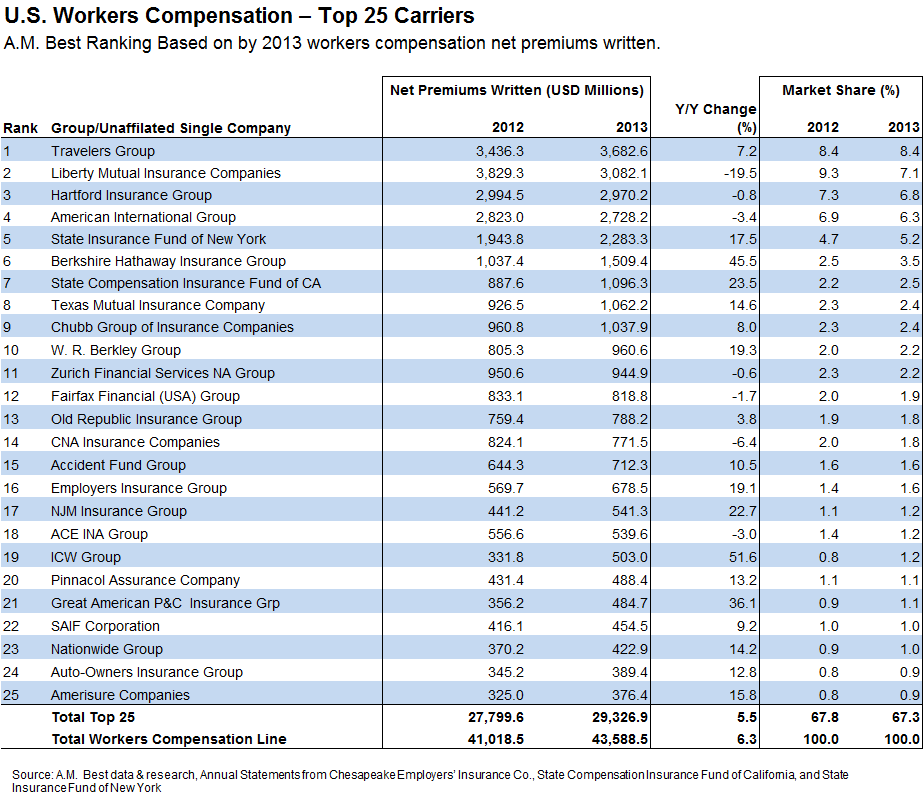While workers compensation continues to face heavy competition and low investment returns, we have good news to tell you. The industry’s combined ratio dipped nearly 12 percent from 2012 to 2013, according to A.M. Best.
The rating agency’s tally includes aggregated results for workers compensation as reported by all companies and state funds.
A.M. Best’s special report determined that the industry’s combined ratio came in at 98.6, including effects from New York State’s workers compensation reform. That compares to 110.3 in 2012 and amounts to an 11.7 percent drop, which A.M. Best said is the lowest calendar-year combined ratio since 2006.
If you remove the effects of the New York workers compensation reform efforts, the sector still improved, with a combined ratio coming in at 103.7. As A.M. Best noted, the New York effort, among other things, ended the requirement for the State Insurance Fund of New York to hold some previously established assessment reserves and administrative expense liabilities. That action remitted $2.2 billion of the reserves and liabilities to the New York State Worker’s Compensation Board, which came in as a special assessment to the state on NYSIF’s income statement, A.M. Best said.
The end result: The infusion led to a major negative incurred loss and expense.
Workers compensation improved in 2013, however, well beyond the combined ratio. Net premiums written landed at nearly $43.6 billion versus $41 billion in 2012.
A.M. Best said it remains concerned about the industry. For example, the workers compensation loss reserve position dropped in 2013, the sixth year it has done so. This time, it was deficient by about $28.6 billion, a jump from $27.8 billion in 2012, A.M. Best noted.
There are also the usual challenges ahead, according to the report.
“While the sustained positive rate environment has benefited underwriting performance, the workers comp industry…faces familiar challenges as the competitive market environment and persistent low investment yields compress operating margins,” A.M. Best said.
The report also includes a ranking of the top 25 workers comp carrier based on 2013 net written premiums.
Source: A.M. Best






















 Women Are Now Leaning Out in the Workplace
Women Are Now Leaning Out in the Workplace  A Practical Blueprint: The Five Plays of an Innovation Culture
A Practical Blueprint: The Five Plays of an Innovation Culture  Executives on the Move at HSB, American Modern Insurance Group, AIG
Executives on the Move at HSB, American Modern Insurance Group, AIG  Why Insurance Telematics Integrations Fail
Why Insurance Telematics Integrations Fail 
















